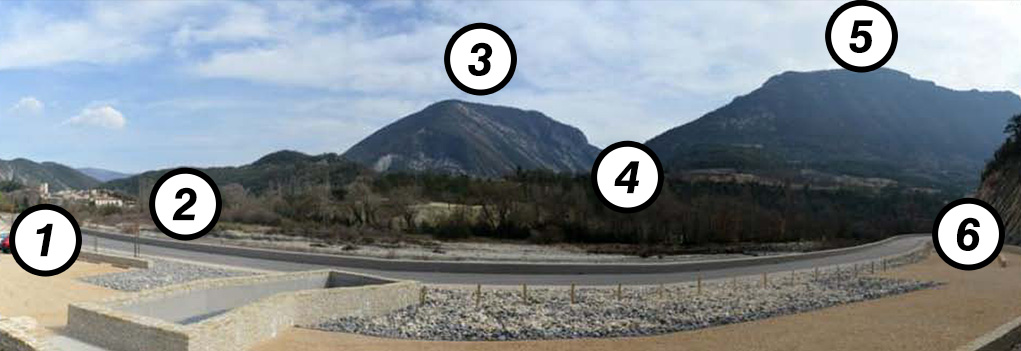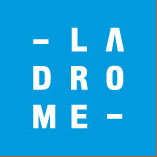
1Castle
2La Charce
3Piégros 1250m
4Gorges de Pommerol
5Saint-Romans 1341m
6Les strates
To the left, at an altitude of 650m, the village of La Charce is situated in the heart of the Oule Valley. Perched on a rocky spur, the houses are gathered tightly around the castle for protection and to keep the best land for growing crops.
Just a few kilometres away, opposite you, are the Gorges of Pommerol that bear witness to the powerful erosion that sculpted the limestone slopes.
The mountains, once used for pastoralism activities (as you can see in the observation telescope showing the landscape in 1905), have now been taken over by heathlands and woods. At an altitude of 650m, between Diois and Les Baronnies on the boundary between the Departments of La Drôme and the Hautes-Alpes, is the village of La Charce, situated in the heart of the Oule Valley, tributary of the River Eygues. The source of the River Oule is about ten kilometres from Montmorin in the Department of the Hautes-Alpes.
Just a few kilometres from here, between Mont Piègros and Mont Saint-Roman, are the Gorges of Pommerol that bear witness to the powerful erosion that sculpted the limestone slopes.The mountains tell us of a past epoch where the landscape, once used for major pastoralism activities, have gradually been taken over by heathlands and woods. The valleys evoke the know-how inherited from the population’s forefathers with, for example, irrigation systems for subsistence farming.
Reading all the details of the landscape enables the places and their history to be better understood. Geography, the shape of the relief, the course taken by rivers and streams and the geology all go to explain the main features of a landscape.The landscape also reveals details of Man’s relationship with the environment (where to live, where to grow crops, where to graze the herds, where to find water, where to travel or do business, where to manufacture, the list goes on).
The village perched on a rocky spur at the confluence of 3 water-courses (the River Oule, the Establet Stream and the River Pommerol) is a remarkable site of historic heritage, from the chateau dating from the Renaissance period, to the houses gathered tightly around the castle for protection and to keep the best land for growing crops.

